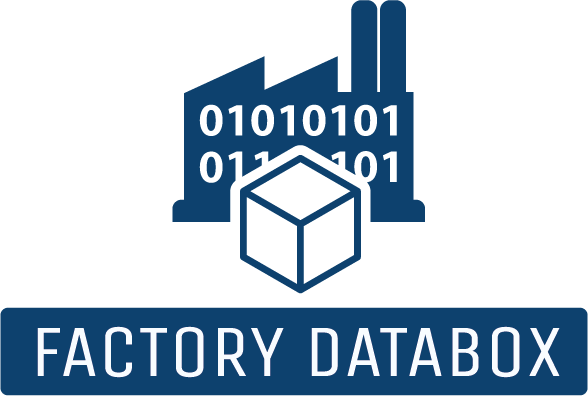What is the link between data analysis and the Supply Chain?
What is the supply chain ?
The supply chain represents all the stages and flows involved in transporting a product from its supplier to the end customer. It is based on a number of interdependent links that ensure the fluidity of operations and the optimization of resources.

1. Suppliers
Suppliers are the key players in the supply chain. They supply the raw materials or components needed to manufacture products. Good supplier management is essential to guarantee quality, availability and cost reduction.

2. Warehousing
Raw materials and semi-finished products are stored in warehousing areas (which may or may not belong to the company) before being used in production. Inventory management must be optimized to avoid over-stocking (high warehouse costs) or stock-outs (risk of delays). Warehouse location and sizing also play a vital role.

3. Production
This stage corresponds to the transformation of raw materials into finished products. Production organization must be efficient to ensure that production meets quality requirements and deadlines. It is at this stage that demand must be predicted, using a variety of methods.

4. Distribution
Once produced, the items are transported to distribution centers, warehouses, or directly to points of sale (stores). This phase requires efficient logistics to minimize transportation costs and ensure optimal delivery times.
⚠️ Distribution doesn’t necessarily take place from the storage warehouse to the customer : it can also take place via suppliers’ or distributors’ warehouses, or via factories directly.

5. Customer
The end customer is the final link in the chain. The aim of the supply chain is to meet their needs in terms of availability, quality and speed of delivery. There are two types of delivery:
– B2B: business to business. The customer is a company that uses these products to produce other goods or to consume them.
– B2C: business to customer.
The Supply Chain Flows
In addition to physical flows, which correspond to the movement of products, the supply chain is based on two other types of flows:
- Information flows: these include, for example, order tracking, production orders (to be explained in greater detail later), labor data, etc.
- Financial flows: linked to transactions between the various links (payments, invoicing, etc.).
A complex value chain
1. Procurement and Inventory Management
Procurement begins with the MRP (Material Requirements Planning) (method of production and inventory management), which proposes replenishments based on production needs and available stocks. After validation, procurement orders are placed with the suppliers, who ship the goods accompanied by delivery notes.
2. Warehouse and Production
Quantitative control
Storage
The goods received go through several essential steps in the warehouse:
- Reception and quantitative control: Verification of the quantities received.
- Quality control: Validation of product compliance.
- Organization and storage: Organization of goods in the warehouse.
- Internal movements: Management of internal flows to optimize product availability.
- Order preparation: Making products available for shipping.
3. Customer Order Management
Customer orders are managed by the Sales Administration Department (ADV), which relies on demand forecasts provided by the product manager. These forecasts make it possible to anticipate needs and optimize logistics flows.
4. Information Flows and Coordination
The ERP (Enterprise Resource Planning system) centralizes and manages key information:
- Stock status
- Stock movements
- Sales forecasts and history
- Ongoing orders
This integrated management ensures effective coordination between the different actors (procurement, production, sales, warehouse) and improves the responsiveness of the supply chain.
5. Delivery to the Customer
Once the orders are prepared, they are shipped to the customers according to the B2B and B2C organization.
The organization of an industrial company
Typical operation of a company

Victor
Léo
Emma
Jones
Will
Joseph
Evans
Morgan
James
Nelson
Marlon
David
Harry
Maria
Julia
Oliver
Jasper
The SCOR method (Supply Chain Operations Reference Model)
The SCOR model is a reference framework designed to analyze and improve the performance of supply chains. It is a powerful tool that allows for the standardization, measurement, and optimization of the different supply chain processes through a set of best practices and criteria.
Definition and Objectives
- Modeling of flows: SCOR is a method for representing logistical flows in a company. It enables mapping and analyzing different logistical structures in a coherent and systematic manner.
- Common language: It provides a common language for all stakeholders in the supply chain, facilitating better communication, coordination, and collaboration between different parties.
- Harmonization of practices: SCOR helps harmonize practices and processes within the supply chain by establishing shared standards and criteria.
- Performance improvement: Through SCOR, companies can identify continuous improvement opportunities by building standardized and measurable KPIs (Key Performance Indicators).
- The 4 basic management principles: The model is based on four fundamental functions that structure actions within the supply chain:
- Plan: Define resource needs and plan the necessary actions.
- Source: Manage procurement and supplier relationships.
- Make: Produce and transform goods or services.
- Deliver: Ensure product distribution to customers.
Implementation of the SCOR Method
Step 1: Gather the actors of the chain and define a common project
The implementation of SCOR starts with gathering the different stakeholders in the supply chain (suppliers, distributors, producers, etc.) and defining a common objective. This requires close cooperation between internal and external actors of the company.
Step 2: Choose the performance indicators (KPI)
Once the project is defined, it is important to select relevant KPIs (Key Performance Indicators) to evaluate the performance of the supply chain. These indicators will measure aspects such as costs, lead times, quality, flexibility, and other performance criteria.
Step 3: Perform benchmarking
Benchmarking involves comparing the company’s performance with best practices or that of competing companies. This allows for identifying performance gaps and areas where improvements are possible.
Step 4: Evaluate the resulting outcomes and proceed with improvement
Finally, once the actions are implemented, it is crucial to evaluate the results obtained with the defined KPIs. This step helps verify whether objectives were met and makes it possible to adjust for continuous improvement of logistical processes and supply chain performance.
Here is a quiz to practice these different concepts: 🌐 QCM Link
